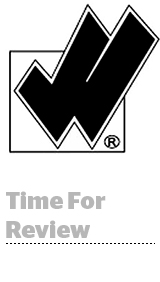 Here’s today’s AdExchanger.com news round-up… Want it by email? Sign up here.
Here’s today’s AdExchanger.com news round-up… Want it by email? Sign up here.
Viewability Budge
The Media Rating Council (MRC) will review its digital viewability standards, which require 50% of a display ad’s pixels be in view for one second and that a video ad play for two continuous seconds. Four years ago, big brands and agencies like Unilever and GroupM pushed industry bodies to raise the bar on viewability criteria, demanding an ad be 100% in view to be deemed “viewable.” Now, the MRC is considering a move toward 100% pixels in view and dedicating resources from its cross-media working group to figuring it out. On the video side, it will examine “duration weighting.” It’s early stages: So far the group has only issued a “call for research.” More.
Big Bucks In Connectivity
Salesforce has agreed to acquire MuleSoft, valued at $6.5 billion. Just as a point of reference, Salesforce’s last big acquisition was the ecom platform Demandbase for $2.8 billion. So what is MuleSoft and why is it worth more than twice as much? It’s an API-building platform that lets users connect different enterprise applications. It’s easy to see why this would come in handy for Salesforce, given all its enterprise clouds and its rich developer ecosystem. Moreover, given that customer data platforms have become the buzzword of the year, MuleSoft’s offering seems to present a way for Salesforce to execute on that potential. More.
Good News Bearer
Google debuted a series of products for news media on Tuesday, along with a $300 million, three-year commitment to develop tools for publishers. Check out the Google blog post by Chief Business Officer Philipp Schindler. Google is also expanding its media subscription services to help users remember and bundle their subscriptions, as well as to surface content they subscribe to at the top of news-related searches. Many news publishers beefed up on subscriptions last year (often by targeting readers unhappy with Donald Trump’s presidency), but those numbers will eventually churn. If Google can offer a way to sustain that subscriber connection, news companies will be grateful.
Radio Waves
Can terrestrial radio survive another generation without, well, the next generation? While 93% of American adults tune into a radio program every week, the number of under-18s who listen to radio has declined about 50% over the past 10 years, Larry Miller, director of NYU Steinhardt’s music business program, tells Axios. “Generation Z, which is projected to account for 40% of all consumers in the U.S. by 2020, shows little interest in traditional media, including radio, having grown up in an on-demand digital environment.” Meanwhile, radio advertising share is forecasted to flatten to 0.4% by 2021 from 1.6% in 2016. Those downward trends have forced iHeartMedia and Cumulus Media to file for bankruptcy within the past year. More.
But Wait, There’s More!
You’re Hired!
This post was syndicated from Ad Exchanger.

More Stories
MNTN Is Selling Ryan Reynolds’ Agency Maximum Effort, SEC Filing Shows
Former KADN Anchor Taylor Trache to Join KLFY in Louisiana
Disney and Hulu Respond After Oscars Streaming Glitches Affect Viewers